Do you want a flourishing vegetable patch throughout the year? For both novice and experienced gardeners, this month-by-month guide to vegetable garden provides a detailed explanation of the planting, care, and harvesting processes.
1. January: Plan, Dream, and Get Ready
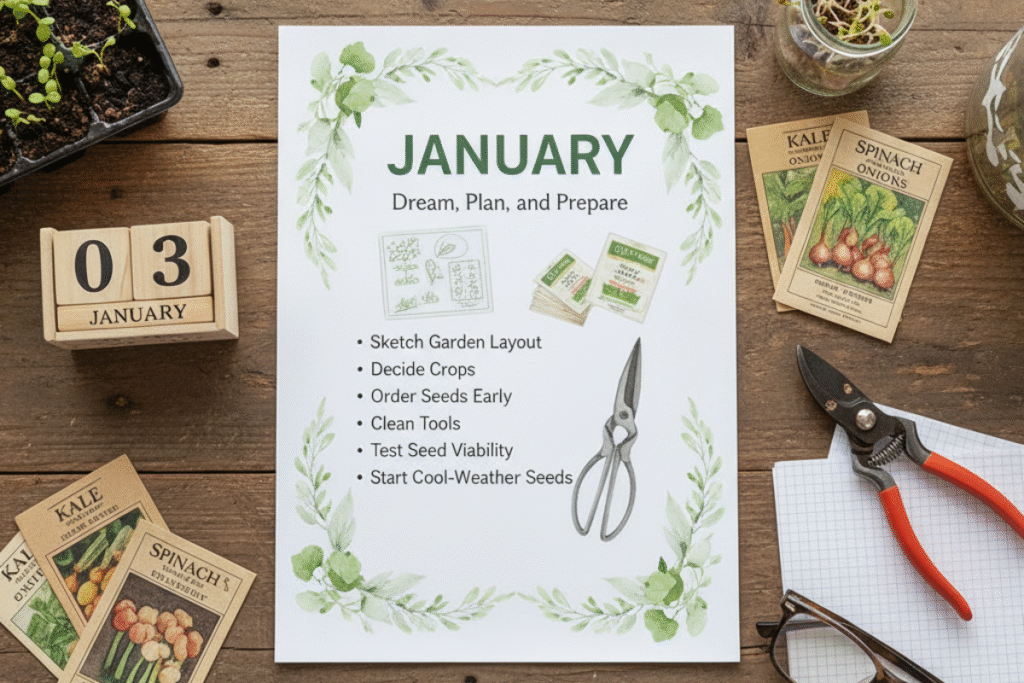
The best time to plan your vegetable garden is in January. The majority of work is done indoors because it’s still cold outside. Decide which crops to grow, plan your garden, and order seeds in advance to avoid them selling out.
Take this opportunity to sharpen pruners, clean tools, and assess the viability of last year’s seeds. You can start cool-weather vegetables like spinach, kale, and onions under cover if your climate is mild.
2. February: Plant Seeds Indoors
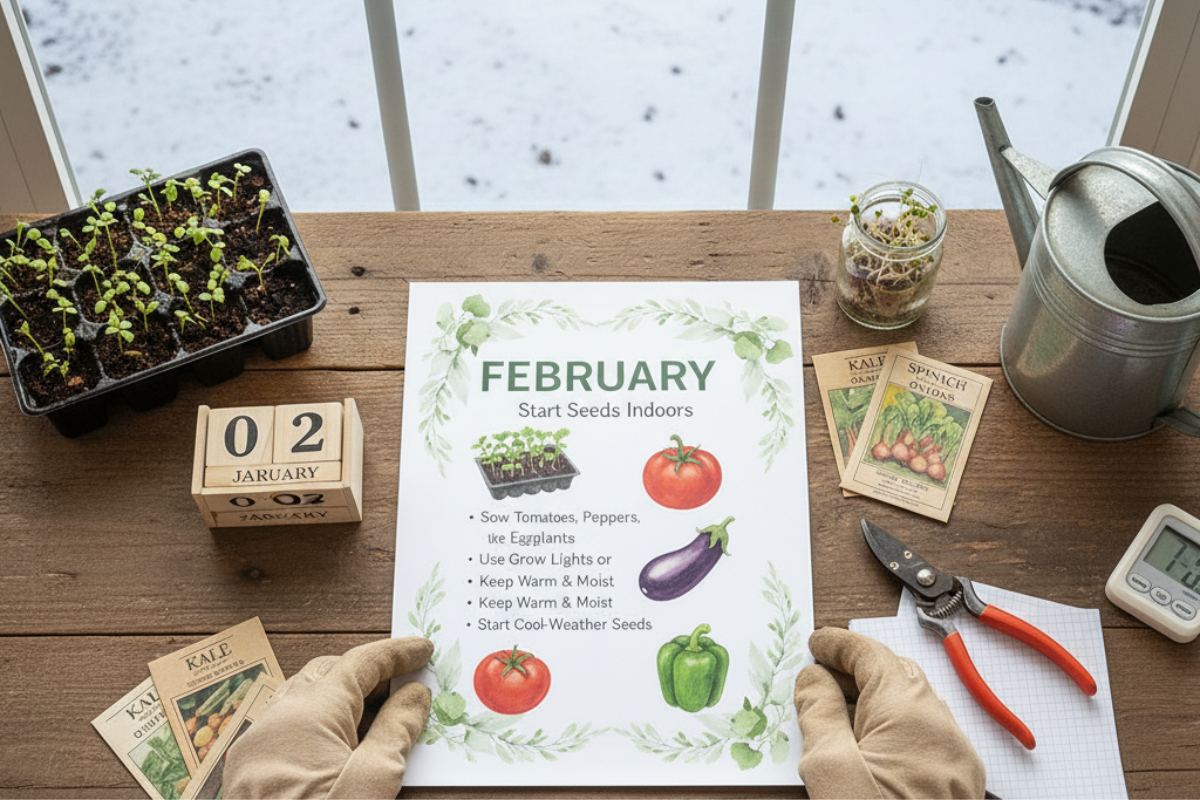
The enthusiasm for gardening increases by February. Now is the time to start seeds indoors. Because they take longer to mature, eggplants, tomatoes, and peppers require a head start.
Use grow lights or a sunny windowsill. Keep seedlings moist and warm. Hardy crops like peas, carrots, and radishes can be directly sown if you live in an area that doesn’t experience frost.
3. Plant Cool-Weather Vegetables in March
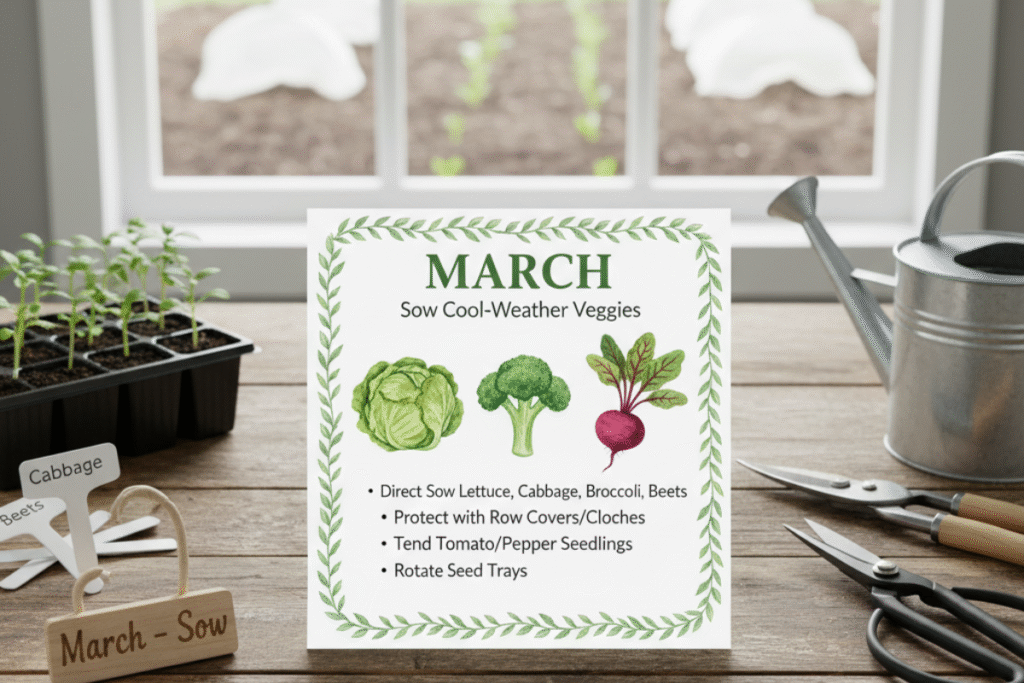
The real action starts in March. For cool-season vegetables, you can begin to sow them outdoors. Consider beets, broccoli, cabbage, and lettuce.
If nights are still cold, cover young plants with cloches or row covers. Continue to care for your pepper and tomato seedlings indoors. To ensure vigorous, straight plants, rotate the seed trays.
4. April: Expand Plantings and Transplant Seedlings
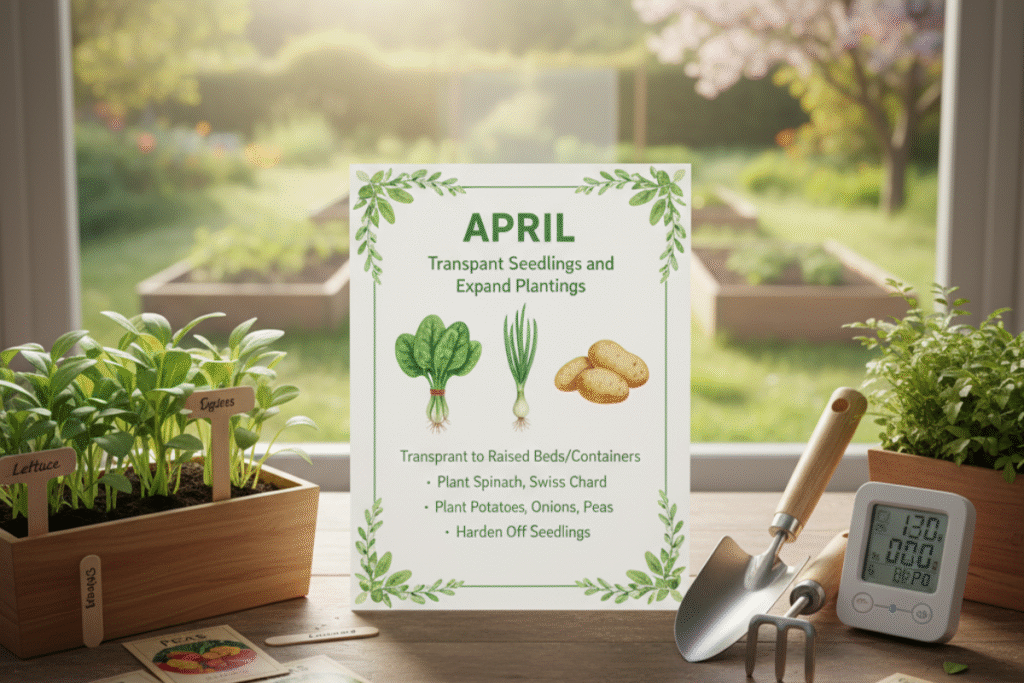
Many gardeners can move seedlings into containers or raised beds in April. Swiss chard and spinach, which are hardy greens, thrive at this time. This month is also a good time to plant peas, potatoes, and onions.
Before putting seedlings outside, make sure they have hardened off. This helps them adapt to wind, sunlight, and temperature changes.
5. The Arrival of Warm-Weather Crops in May
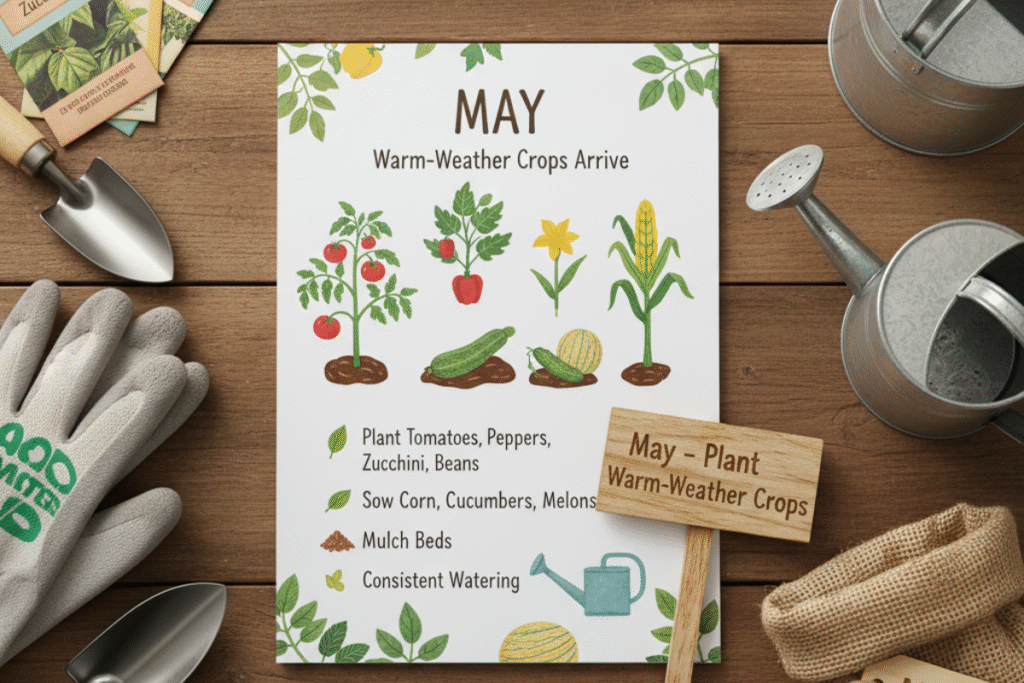
In many areas, the risk of frost subsides by May. This implies that warm-season vegetables, such as beans, tomatoes, peppers, and zucchini, can be planted directly in the garden.
Additionally, this is the best time to plant melons, cucumbers, and corn. Mulch your beds to retain moisture and prevent weeds. Healthy summer harvests are based on regular watering.
6. June: Care for, nourish, and assist plants
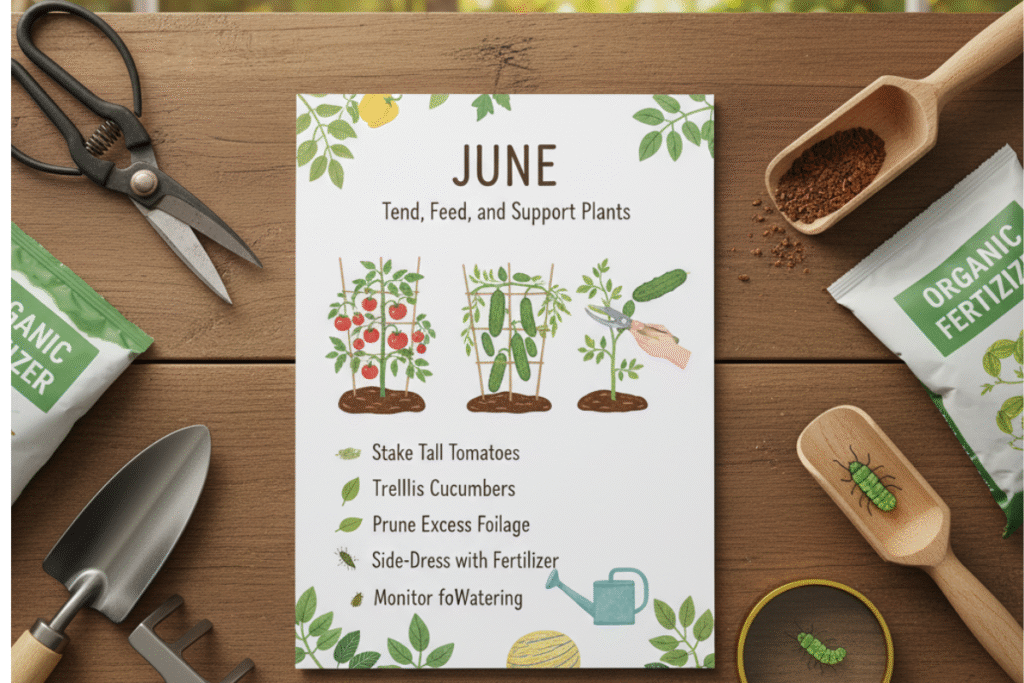
June is dedicated to a month-by-month guide to vegetable garden maintenance. Regular care is essential because crops are proliferating. Trim any extra foliage and stake tall tomatoes and cucumbers to support their growth.
Apply compost or organic fertiliser as a side dressing for heavy feeders, such as corn and squash. Aphids and caterpillars can appear overnight, so keep an eye out for them. Bigger issues later can be avoided with a bit of attention now.
7. July: Planting for Succession and Harvest
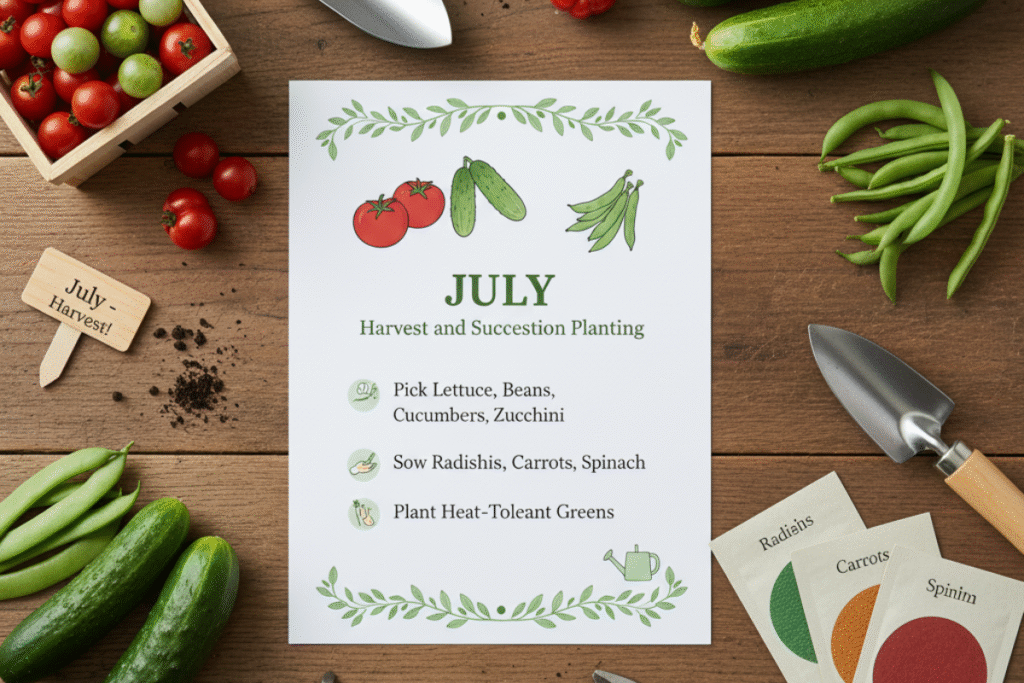
Lettuce, beans, cucumbers, zucchini, and early tomatoes are among the first harvests that arrive in July. Pick frequently to promote ongoing output.
At the same time, plan. For a late-summer harvest, plant quick crops like spinach, carrots, and radishes. Plant heat-tolerant greens, such as amaranth or Malabar spinach, in hotter climates.
8. August: Continue Planting and Picking
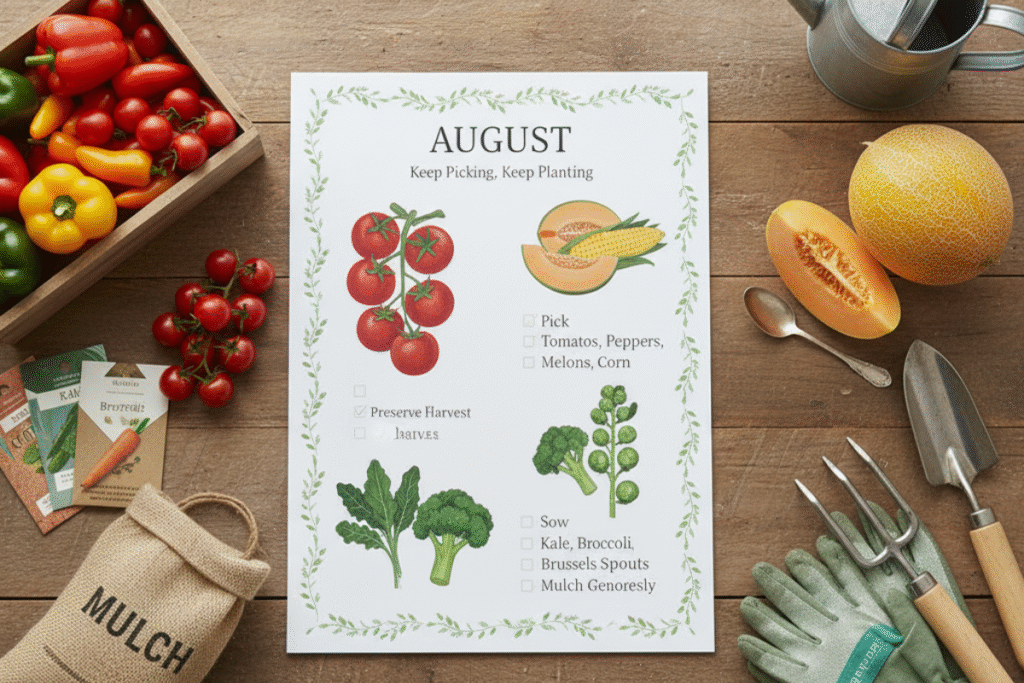
Harvest is at its best in August. Sweet corn, melons, peppers, and tomatoes are all in peak season. You can freeze, dehydrate, or preserve the produce.
Fall crops can now be planted as well. For a crisp fall harvest, start Brussels sprouts, broccoli, and kale. Mulch extensively to keep moisture in crops and water deeply to shield them from heat stress.
9. September: Fall Cleaning and Planting
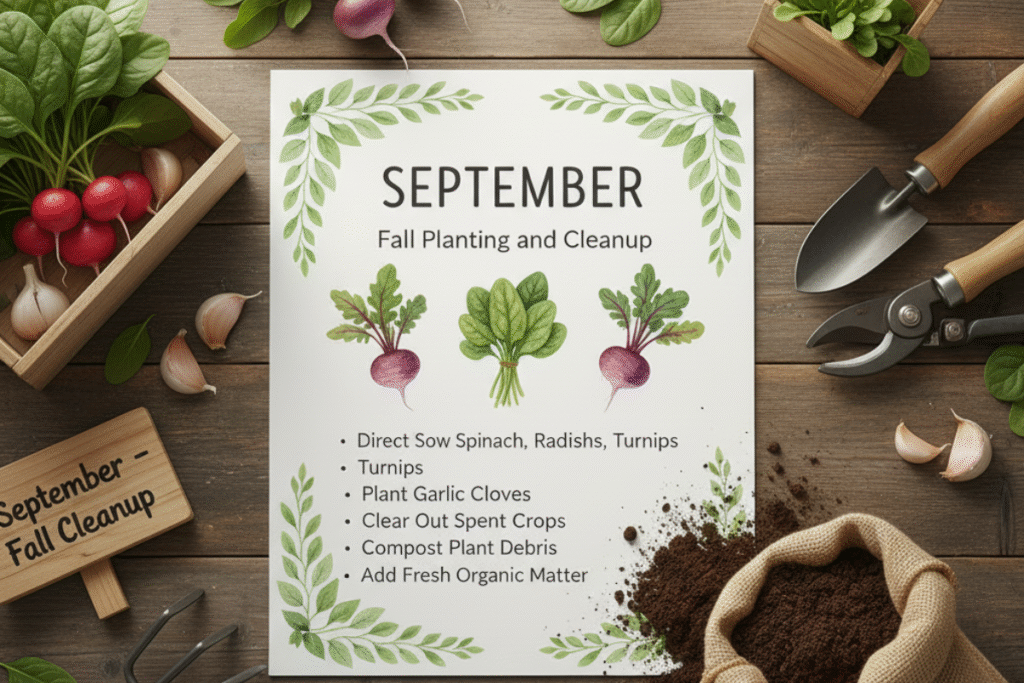
The emphasis returns to cool-season vegetables in September. Sow turnips, radishes, and spinach directly. For the harvest the following summer, plant garlic cloves.
To avoid diseases, remove summer crops that have finished growing. Add fresh organic matter to garden beds and compost plant waste. This prepares the garden for a healthy fall and winter.
10. October: Lengthen the Growing Season
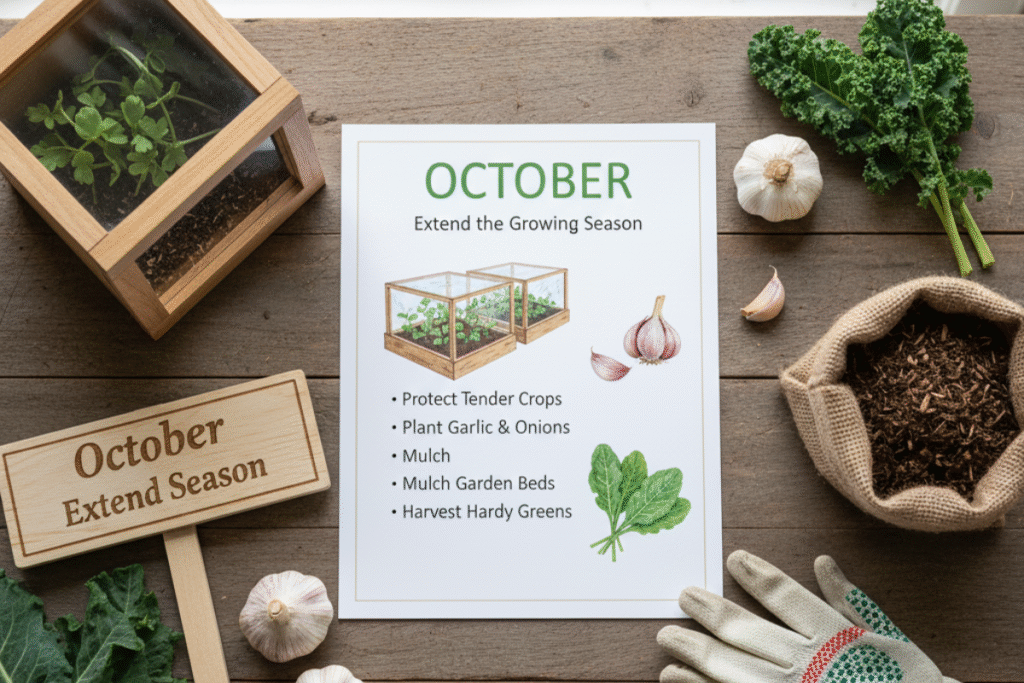
Harvests are extended in October. To prevent frost damage to delicate crops, use mini greenhouses, cold frames, or row covers. Cooler air is ideal for hardy greens, such as collards and kale.
In milder climates, this is also the time to start growing onions for winter and continue planting garlic. Garden beds that are mulched maintain healthy soil and warm roots.
11. November: Winter Preparation and Root Crops
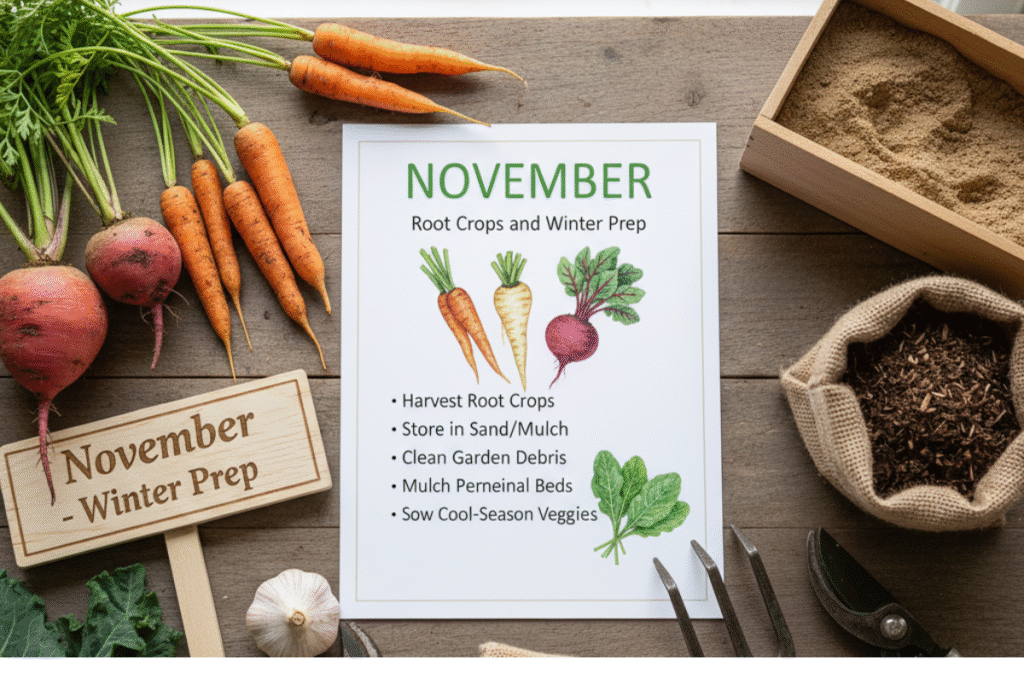
By November, a light frost enhances the sweetness of root crops like beets, carrots, and parsnips. For extended use, store extras in mulch or sand after harvesting as needed.
Mulch perennial beds and remove any leftover garden debris. Continue planting cool-season vegetables, such as spinach and lettuce, under cover in warmer climates.
12. December: Take Stock and Relax
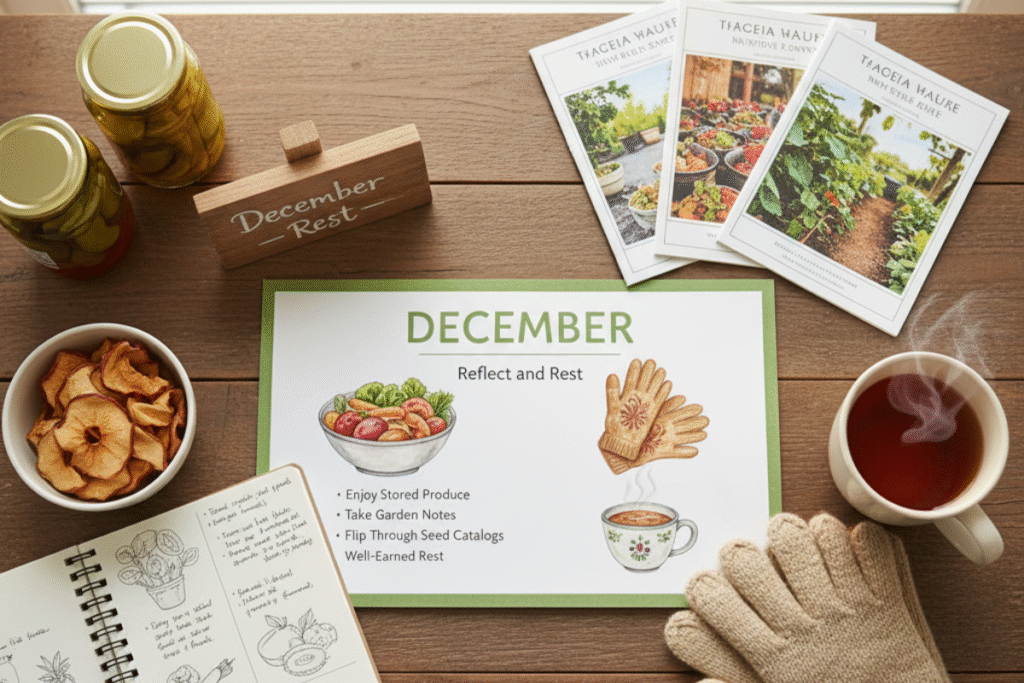
For most gardeners, December is a quiet month. Savour the preserved vegetables and produce that have been stored from previous months. Make a list of your garden’s successes and failures this year.
Go through seed catalogues once more, plan your garden for the following year, and take a well-earned break. Your vegetable garden’s monthly guide cycle continues to run even when it is dormant.
Concluding remarks
Whether you’re planting, harvesting, or just planning for the next season, a month-by-month guide to vegetable garden helps you stay on track. Your garden will reward you with consistent, nutritious harvests if you divide the year into manageable chunks.
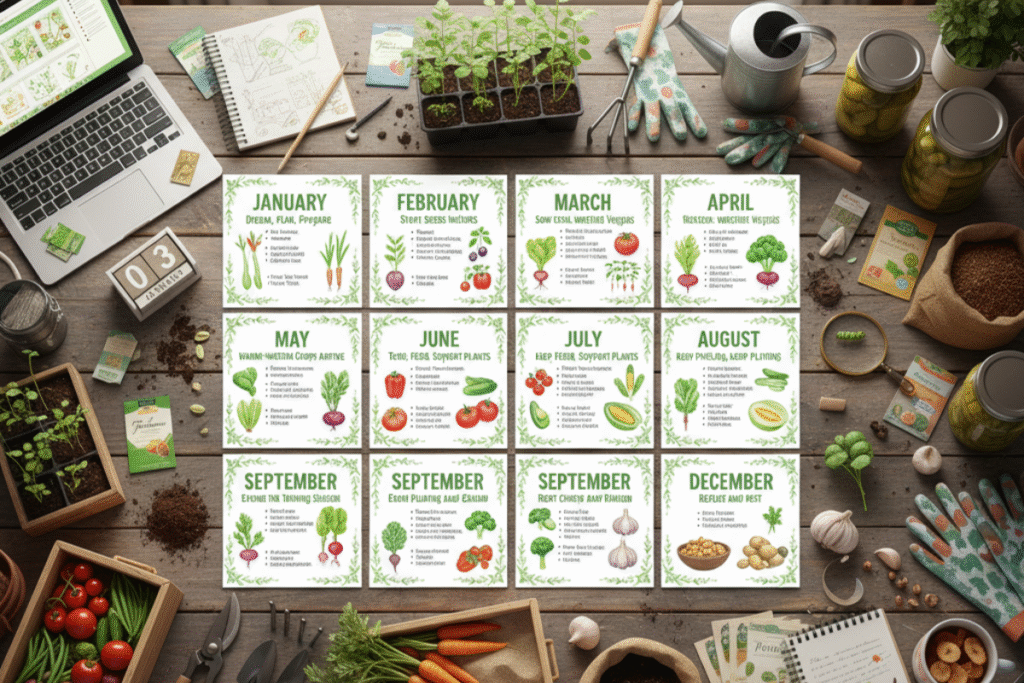
See this :Amazing Balcony Vegetable Garden Ideas for Beginners
FAQs about Month-by-Month Guide to Vegetable Garden
1. What vegetables grow year-round?
Hardy greens, such as kale, spinach, and Swiss chard, can grow year-round in many climates, especially with protection like row covers. Root crops such as carrots also store well in the ground.
2. When is the best month to start a vegetable garden?
March or April is ideal in most regions, but it depends on your frost dates. Check your local climate zone for the best start time.
3. Can I start a vegetable garden in winter?
Yes, in warmer climates, you can grow leafy greens, peas, and root veggies in winter. In cold zones, winter is perfect for planning, seed starting indoors, and soil preparation.
4. How do I keep my vegetable garden producing all year?
Practice succession planting, choose seasonal crops, and use season extenders like cold frames. With planning, your garden can supply fresh produce nearly every month.




